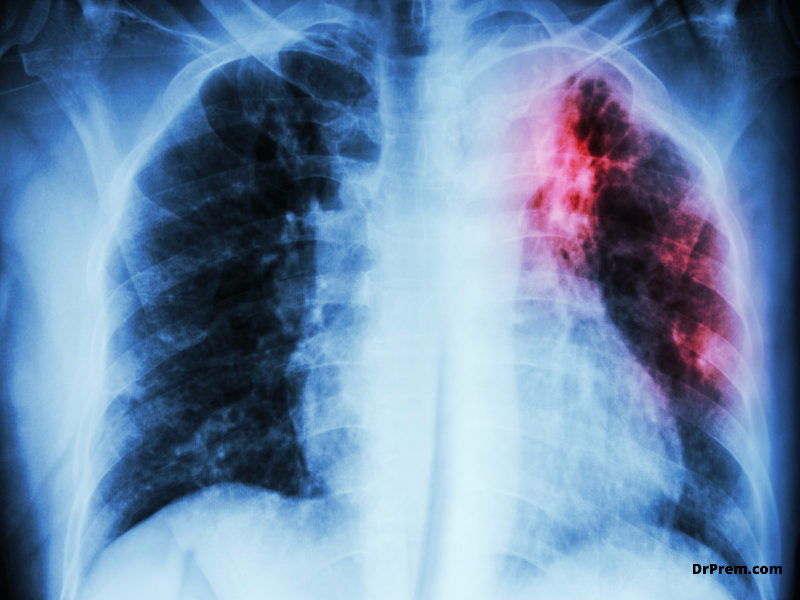Hardly a month had elapsed since the Ministry of Health had committed to eradicating the curse of tuberculosis by 2025 when a medical journal Lancet heralded the bad news. According to its report, TB crisis in India is likely to worsen with the rise in the number of Multidrug-Resistant TB (MDR- TB) cases when the patient does not respond to the first-line of medication.
MDR- TB is more threatening than conventional TB cases. It spreads fast and intensifies assault like other airborne diseases. Most importantly, drug-resistant TB takes a longer time to treat and is more expensive!
Though tuberculosis deaths in India recorded a 12% fall from 480,000 in 2015 to 423,000 in 2016, according to the WHO, India is heading for a bigger challenge in TB management fighting multidrug-resistant cases.
The disaster zone for multi-drug resistant

:
Currently, India houses an estimated 10 million TB patients. A staggering 1.3 lakh drug-resistant patients fail to respond to first-line drugs, which indeed is an alarming situation. About 40% of drug-resistant cases are observed in Russia, India, Philippines, and South Africa amounting to 230,000 as in 2015.
Reasons favoring the rise in drug-resistant TB:

-
Non-reporting of TB cases with the National TB program:
It is important for every TB patient diagnosed undergoing treatment in private healthcare organizations to get registered with the National TB program, which helps with free diagnosis and quality treatment.
In reality, about 63% of estimated TB cases in India get registered with the government according to the records of 2016. The remaining ones may be either undergoing treatment in private clinics or not getting treatment at all which are likely to develop drug-resistant TB.
India is the country where the lowest number TB incidences are reported. It is followed by Indonesia and Nigeria according to WHO reports.
-
Low treatment success rate:
Though the fall in the number of TB cases reflects some success in India’s fight against TB but the simultaneous rise in drug-resistant cases largely negates the quantum of success achieved. Now if TB is curable, then why the low treatment success rate?
The reason is many cases of TB are partially treated. This is mainly due to sheer negligence of the patients or may be due to social stigma. Most patients hide their cases especially those from the lower economic bracket fearing total alienation from family and society which is very common. Many do not go for proper treatment and if at all they opt for it they stop midway without realizing the consequences.
-
False conception in treatment completion:
The completion of TB treatment in India does not mean only being TB free. The standard of TB care in India strongly recommends a patient reexamination after 6 or 12 months of the completion of the treatment.
Ironically, India’s National TB program fails to provide the status of the patients after one year of treatment many of which may have higher chances of recurrence. Of 2.7 million estimated TB cases in India, only 39% are reported to have completed the treatment.
-
Lesser success in treating drug-resistant TB:
There has been a pretty low enrollment in treating the drug-resistant TB patients with 75% of the patients not turning up for the required treatment. According to the WHO, 46% of MDR-TB patients and 29% of XDR TB patients starting treatment in 2016 could be successfully treated, which is quite low according to the expected standards.
-
Lack of initiative in searching TB patients:
There is a serious lack of active searching of TB patients and bringing them under treatment coverage, especially the confirmed cases in children. Only 1.5% of the confirmed children TB cases could be put on preventive medicine. The unrecorded cases pose a serious concern in the transmission of this deadly drug-resistant variety.
-
Need for more domestic funding:
Funding for TB prevention and care in India has doubled between 2015 and 2017 with 74% of funds amounting to $525 million being sourced domestically and 26% internationally. Still, the requirement is more to carry on research and development in creating effective drug regimen resulting in shorter treatment duration and better outcome.
Quick action is required at this moment:

It has been established that transmission from the patients carrying resistant strains will be faster than from those carrying non-resistant strains. To handle this upcoming epidemic, prevention and proper intervention are imperative.
- Availability of effective diagnostic tests leading to an early detection of MDR TB and timely medication may go a long way in curbing the looming menace.
- Proper infection control measures focusing on households must be initiated.
- Implementation of short duration chemotherapy may also check the spread of MDR TB.
- Improved TB drugs like Bedaquiline and Delamanid should be included in India’s TB management program.




